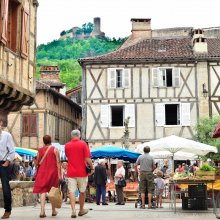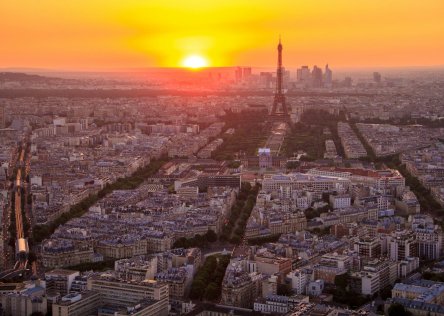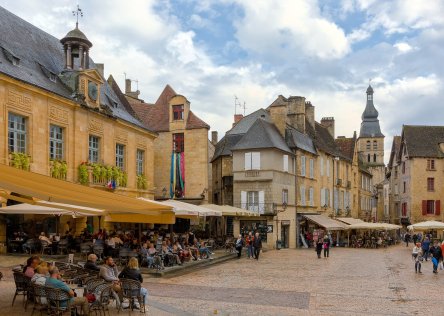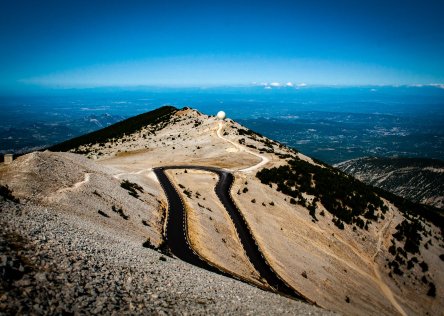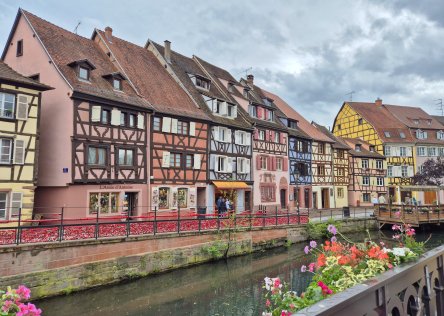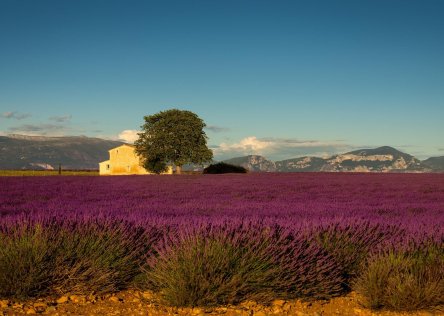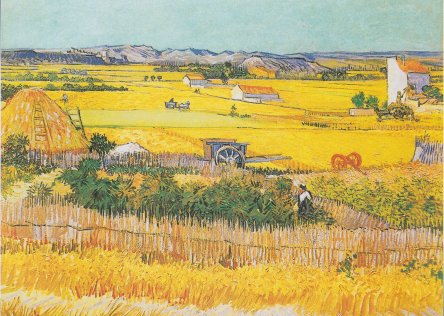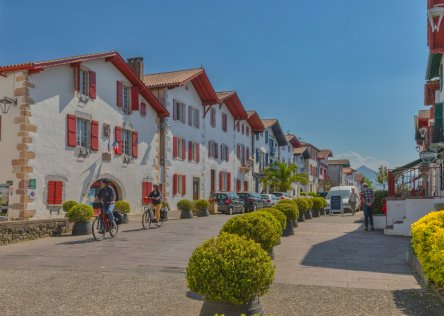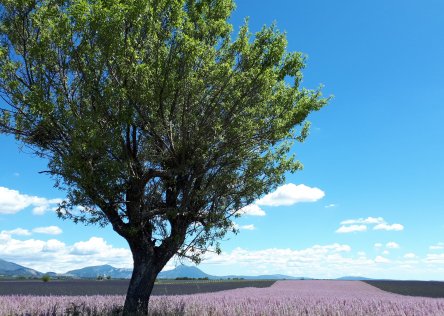The Dordogne region is not as well-known as other parts of France, but so many people fall in love when they discover it for the first time, and often return again and again. Indeed, it’s a favorite region of France Just For You founder Émilie and her husband Guillaume (who spent his childhood summers here).
We love to help our travelers explore Dordogne by car, as its cliffside castles, golden-hued villages, and prehistoric caves are difficult to access in any other way.
From ancient cave art to mouth-watering local dishes and spectacular landscapes, it’s a place that invites slow travel, spontaneous detours, and a deep appreciation for the beauty of nature and heritage.
In this 5-day Dordogne road trip itinerary, we share some of our favorite places, experiences, and hidden gems.
If you book one of our Dordogne tours, we’ll arrange for you to be based in beautiful, conveniently located premium B&B accommodation, and craft an itinerary that matches your interests. Our aim is for you to experience France in a way that leaves you with fond, lifelong memories.
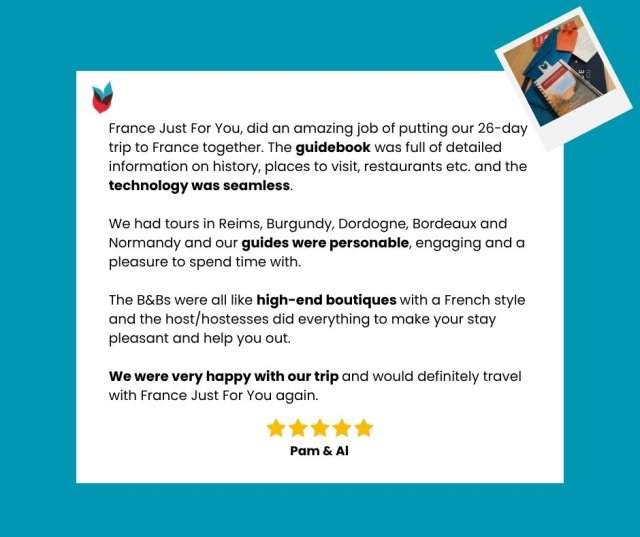
©
Traveler Pam & Al review of their trip to France (see more on TripAdvisor)
Day 1: Discovering Sarlat
Begin your Dordogne adventure by exploring Sarlat-la-Canéda, the heart of Périgord Noir and one of France’s best-preserved medieval towns.
Sarlat’s Old Town
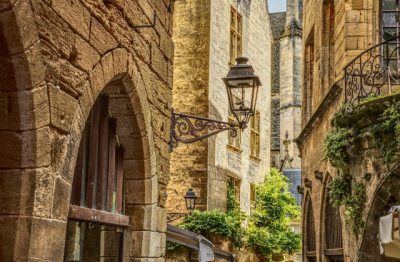
Sarlat’s historic center is one of the best-preserved in France, with beautifully restored stone buildings that date back to the 15th and 16th centuries.
As you stroll along its cobbled lanes, you’ll spot Renaissance mansions, shaded courtyards, and the town’s famous lauze rooftops with their traditional stone tiles.
The Place de la Liberté is the heart of the old town, where you’ll find cafés and market stalls filled with local specialties. Sarlat is best explored slowly, leaving plenty of time to soak it all in.
Saint-Sacerdos Cathedral
The cathedral stands on the site of a Benedictine abbey founded in the 9th century, which helped establish Sarlat as a regional religious center during the Middle Ages. The current building reflects centuries of change, with Romanesque foundations, a Gothic bell tower, and Baroque additions from a 17th-century restoration following the Wars of Religion.
Lanterne des Morts
The Lanterne des Morts is a mysterious 12th-century tower located just behind the cathedral in Sarlat. Shaped like a slender cone and built without windows, its true purpose is still debated. Some believe it may have marked a cemetery or served as a symbolic light for the dead. Others suggest it was built to honor Saint Bernard of Clairvaux after his visit to the town in 1147.
Place de la Liberté
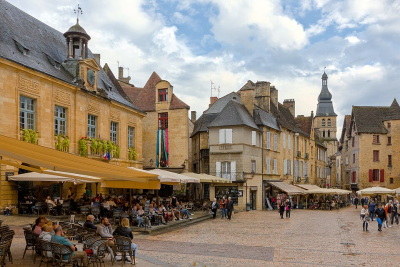
Place de la Liberté is the main square in Sarlat’s old town and a lively focal point for local life. Surrounded by Renaissance-era buildings, it hosts the town’s famous market twice a week, and in the summer months especially during the Sarlat Theatre Festival, it becomes a stage for street performers and evening concerts.
Sarlat Market
If you’re in Sarlat on a Wednesday or Saturday, stock up on truffle products, walnut cake, and local cheese at the market, centered around Place de la Liberté and spilling into nearby streets.
It’s a great opportunity to chat with local producers and literally get a real taste of the Périgord’s culinary heritage.
Panoramic Glass Elevator
For a unique perspective over Sarlat, you can take the panoramic glass elevator inside the old Sainte-Marie church tower next to Place de la Liberté.
Designed by renowned architect Jean Nouvel, who grew up in Sarlat, the open-roof lift offers panoramic views over the town’s golden rooftops and surrounding hills. It usually runs from spring to early fall, but is closed in wet weather.
Day 2: Castles, Canoes & Domme: A Day in the Dordogne River Valley
Today is all about the must-see places you’ll find in the breath-takingly beautiful Périgord Noir stretch of the Dordogne River Valley.
Domme
Domme is a 13th-century bastide town, originally founded by King Philip III of France during the conflict with the English. Unlike many bastides on flat land, Domme was built high on a clifftop for defensive purposes, giving it a dramatic perch above the Dordogne River and offering one of the most spectacular viewpoints over the Dordogne Valley.
Its fortified gates and ramparts are still largely intact, including the Porte des Tours, where Knights Templar were imprisoned in the early 1300s — you can still see their carvings etched into the stone.
Walk along the ramparts, visit the small market (open on Thursdays), and enjoy a refreshing drink at one of the hilltop cafés.
La Roque-Gageac
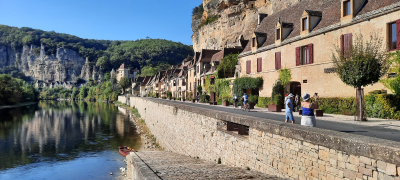
This striking village is built between a cliff and the Dordogne River, where golden-stone houses, troglodyte dwellings, and a small 14th-century church appear frozen in time.
You’ll also find the Jardin Exotique, an unusual terraced garden with Mediterranean and tropical plants that thrive thanks to the cliff’s natural protection.
From the riverside, you can board a traditional gabarre boat - a flat-bottomed vessel once used for transporting goods - for a peaceful one-hour cruise past castles and limestone cliffs. Tours usually run every hour from 10am to 6pm during the main season.
Château de Castelnaud
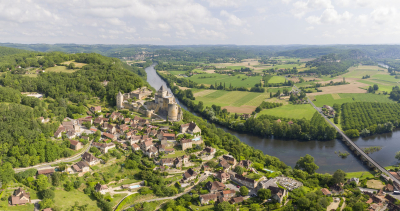
The Château de Castelnaud is one of the most impressive fortified castles in the Dordogne, strategically positioned above the confluence of the Dordogne and Céou rivers.
Originally built in the 12th century and later expanded during the Hundred Years’ War, it was held by the English before being retaken by the French. Today, the castle houses a Museum of Medieval Warfare, with an extensive collection of weapons, armor, and full-size siege machines displayed both inside and on the ramparts.
The views over the valley are spectacular. You can park either at the bottom of the village and walk up (about 10 minutes), or use the smaller lot closer to the top.
Château de Beynac
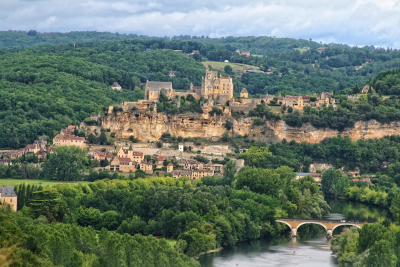
The Château de Beynac is a medieval fortress that stands high above the Dordogne River, with thick stone walls and scenic views of the valley below.
Built in the 12th century, it was held by the French and became a strategic stronghold during the Hundred Years’ War, while the rival fortress of Castelnaud, just across the river, was in English hands.
In the late 1100s, it was occupied by troops loyal to Richard the Lionheart, King of England and Duke of Aquitaine, who fought to assert control over the region.
Today, visitors can explore the castle’s austere rooms, climb the keep, and enjoy the views from the ramparts. You can walk up through the village (about 15 minutes) or park closer to the entrance at the top.
Day 3: The Magic of Marqueyssac & French Cooking
Following a busy day of sightseeing, today it might be nice to slow down and explore some beautiful gardens at a leisurely pace. Later on, you can learn how to prepare and savor some of Dordogne’s finest flavors.
French Cooking Class
If you book a Dordogne tour with us, we can arrange for you to enjoy a hands-on cooking class with Eric and Nathalie, two of our preferred B&B hosts. You’ll prepare a typical Périgord meal in their beautiful kitchen using fresh, local ingredients. Then you’ll enjoy your creation over lunch with good wine and even better company.
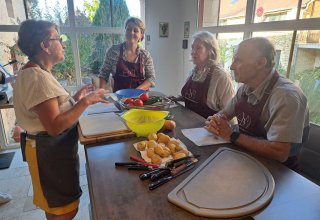


Marqueyssac Gardens
After a satisfying lunch, you may like to wander through a masterpiece of topiary and panoramic beauty. These hanging gardens sit high above the Dordogne River and are especially magical at sunset.
In July and August, you can stay for the Marqueyssac’s Thursday candlelit evenings, when 2,000 candles transform the gardens into an enchanting scene straight out of a dream.
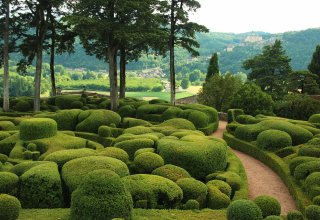
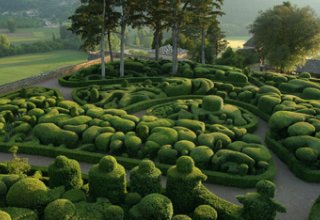

Day 4: Caves, Prehistory & the Vézère Valley
Today you’ll step back in time — way, way back — to the Paleolithic era. You might not have time to explore all three of these caves, so see which ones interest you the most.
Morning
Font-de-Gaume Cave
Font-de-Gaume is one of the last remaining caves in France where you can still see original polychrome prehistoric paintings, not replicas.
The artwork dates back around 15,000 years and includes more than 200 figures, with vivid depictions of bison, mammoths, reindeer, and horses created using natural pigments and clever use of the rock’s contours.
The cave is kept under strict conservation conditions, and daily visitor numbers are extremely limited. Buy your tickets weeks or months in advance during the peak season.
A visit here offers a rare and moving glimpse into the creativity and symbolic world of early humans.
Lascaux IV Replica
If Font-de-Gaume is full, don’t worry. Lascaux IV offers a full and exact replica of the original Lascaux cave, complete with immersive audio-visual experiences, light effects, and even the smell and atmosphere of the original cave.
Rouffignac Cave
Known as “The Cave of 100 Mammoths”, Rouffignac Cave is a vast network of underground tunnels stretching five miles beneath a limestone plateau. An electric train takes visitors deep into the cave system, passing ancient bear hibernation scratches still visible on the walls.
The cave’s main galleries feature striking black-line engravings and drawings of mammoths, woolly rhinoceroses, ibex, and horses created more than 13,000 years ago.
If you want to see an original cave, Rouffignac may be a fun option if you’re traveling with children, offering an accessible introduction to Upper Paleolithic art in a natural, unaltered setting.
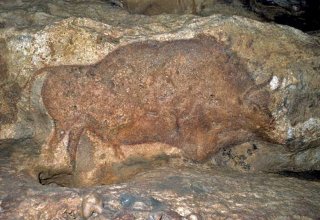
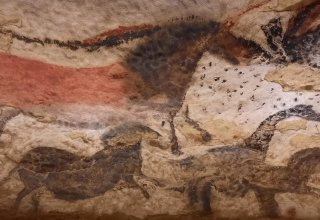

Afternoon
Saint-Léon-sur-Vézère
Stroll through Saint-Léon-sur-Vézère, a riverside village with beautiful stone houses, three historic castles, and a 12th-century Romanesque church.
Enjoy lunch at Déjeuner sur l’Herbe, a rustic riverside picnic spot.
This area is gloriously peaceful - perfect for a slow afternoon walk or riverside break.
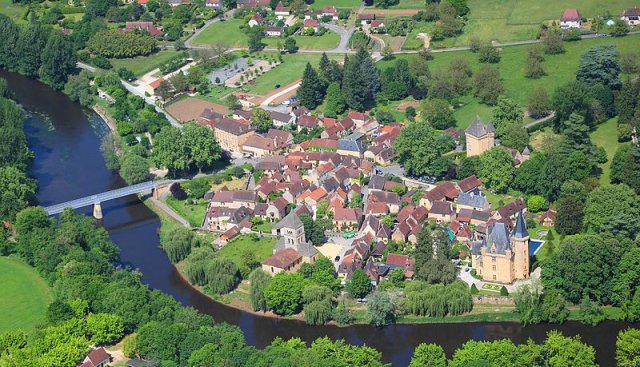
©
Commune Saint Leon sur Vezere
Day 5: Eyrignac Gardens or a Cliffside Pilgrimage
On your final day in the Dordogne, you might choose to take it slow among peaceful gardens or venture further afield to explore one of the most dramatic pilgrimage sites in France. It’s possible to do both, though some travelers might find it too much for one day.
Eyrignac Gardens
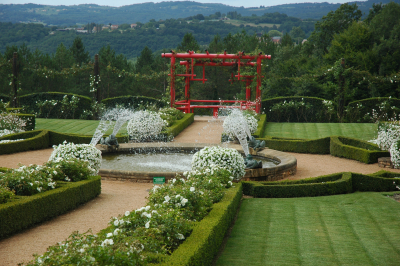
Located near Salignac, the Jardins d’Eyrignac are among the finest examples of formal French topiary in the region. Covering 10 hectares, the gardens feature meticulously sculpted hedges, tree-lined avenues, fountains, a White Garden, and a 17th-century manor house still occupied by the same family.
It’s a quiet, meditative place to walk, reflect, and enjoy the symmetry and elegance of classic French garden design.
On the way back, you might like to stop at a local market or specialty shop (often sign-posted along the roads) to pick up a few regional treats. These include walnut oil, truffle salt, foie gras, cabécou cheese, or a bottle of sweet Monbazillac wine, which make great souvenirs or gifts.
Rocamadour
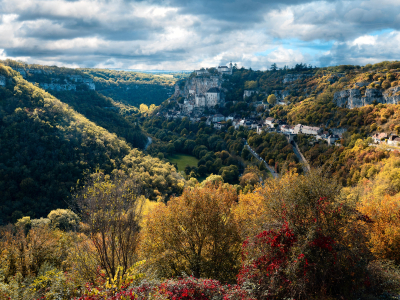
If you’re up for a longer drive (about 90 minutes each way), Rocamadour makes for a memorable finale. Built into the limestone cliffs of the Alzou Gorge in the Lot department, this medieval village has attracted pilgrims for centuries. You can explore the zigzagging Grand Escalier, visit the sanctuary chapels nestled into the rock, and enjoy panoramic views over the gorge and surrounding countryside. Despite its popularity, it retains a sense of wonder — especially in the quieter morning or late afternoon hours.
However you choose to spend the day, you may like to make a special dinner reservation for the evening and toast to a truly unforgettable week in the Dordogne. In your personalized France Just For You guidebook, we list all our favorite restaurants.
Practical Tips for Your Dordogne Road Trip
-
When to go
Spring and early fall are perfect for mild weather and fewer tourists. October is ideal for food lovers - truffles, mushrooms, and golden light abound.
-
Getting there
You may start in Bordeaux or Toulouse, then drive 2–3 hours. If driving from Paris, you may like to include a stay in the Loire Valley to break up the journey.
-
Where to stay
We’ve handpicked premium countryside B&Bs that blend charm, comfort, hospitality, and a convenient location for getting to all the highlights.
-
Driving tips
Allow time for scenic routes and unexpected detours and stops - Dordogne’s small roads are slow and there are hidden gems just waiting for you to find them (we’ll guide you to our favorites if you book with us!).
Let Us Plan Your Perfect Dordogne Driving Itinerary
This itinerary is just the beginning. When you book a self-drive tour with France Just For You, we’ll tailor everything to your interests and preferences - from charming B&B and boutique hotel accommodations and car rental to tickets, cooking classes, and other fun local activities.
We love this region and want you to experience it like a local, with expert insight, the warmth of French hospitality, and just the right amount of adventure!
Send us your France trip-planning form
FAQ
What is the prettiest town in the Dordogne?
That depends on your taste, but Sarlat-la-Canéda is often considered one of the most beautiful, with its golden stone buildings, lively market, and exceptionally well-preserved medieval center (see our blog post on things to do in Sarlat).
For something quieter, Domme offers stunning views over the river valley, while La Roque-Gageac is unforgettable for its dramatic setting between the cliff and the Dordogne River.
Is it easy to drive in the Dordogne?
Yes — with a few things to keep in mind. Roads are generally in good condition and traffic is light, especially outside the summer high season. However, many villages have narrow streets, and rural roads can be winding. A GPS (we prefer Waze) is helpful, and we recommend choosing a smaller car if possible.
Where is the best place to base yourself in the Dordogne?
The Périgord Noir, near Sarlat-la-Canéda, is a good option, as it gives you easy access to many of the region’s highlights: castles, caves, river villages, and local markets.
We handpick charming B&Bs in this area, so you can enjoy peace and quiet while staying close to everything you’ll want to see.
How long should you spend in the Dordogne?
We suggest at least 4 to 5 days to explore the key sights without rushing, including castles, prehistoric caves, and beautiful villages.
If you love walking, kayaking, local food, or simply relaxing in the countryside, you could easily stay a full week and still find more to discover.


